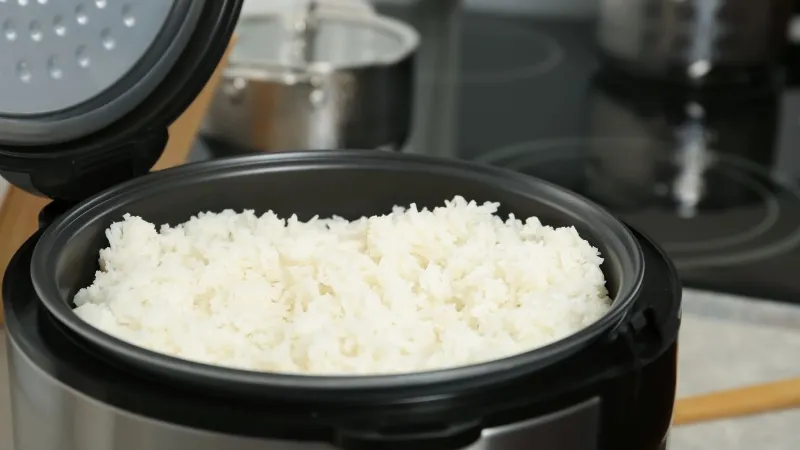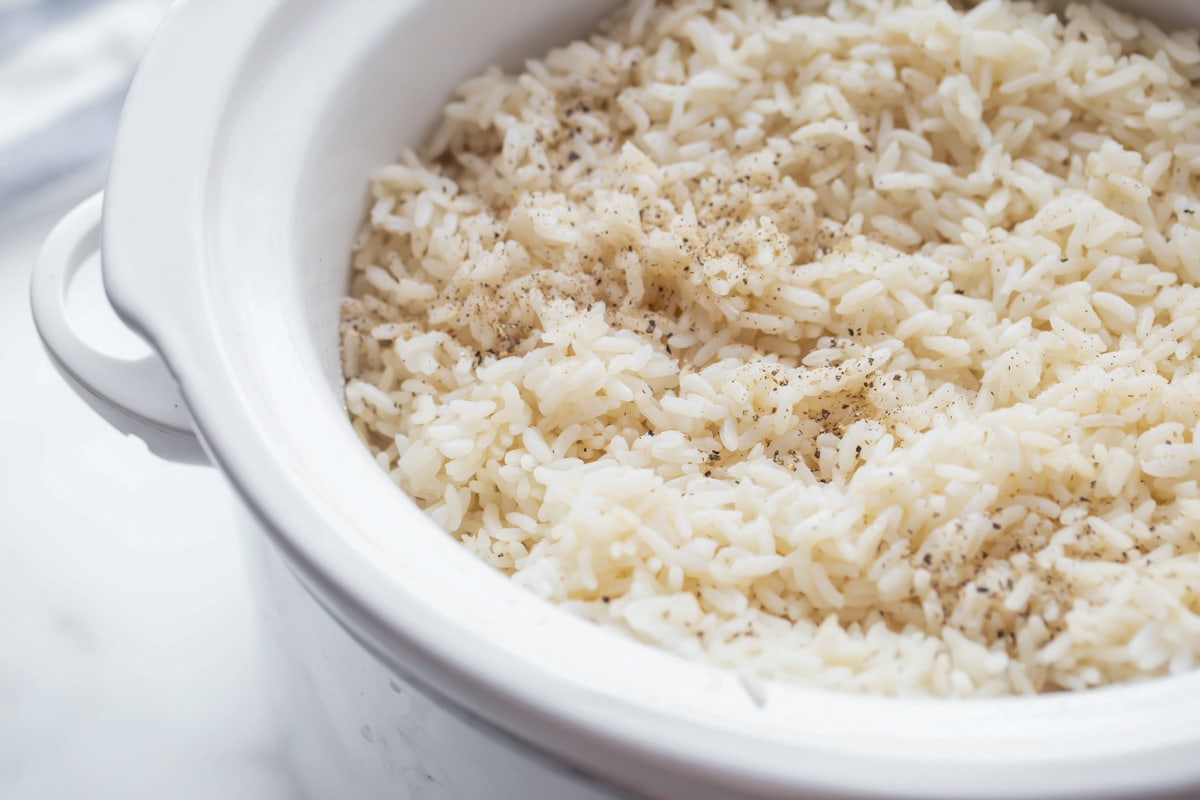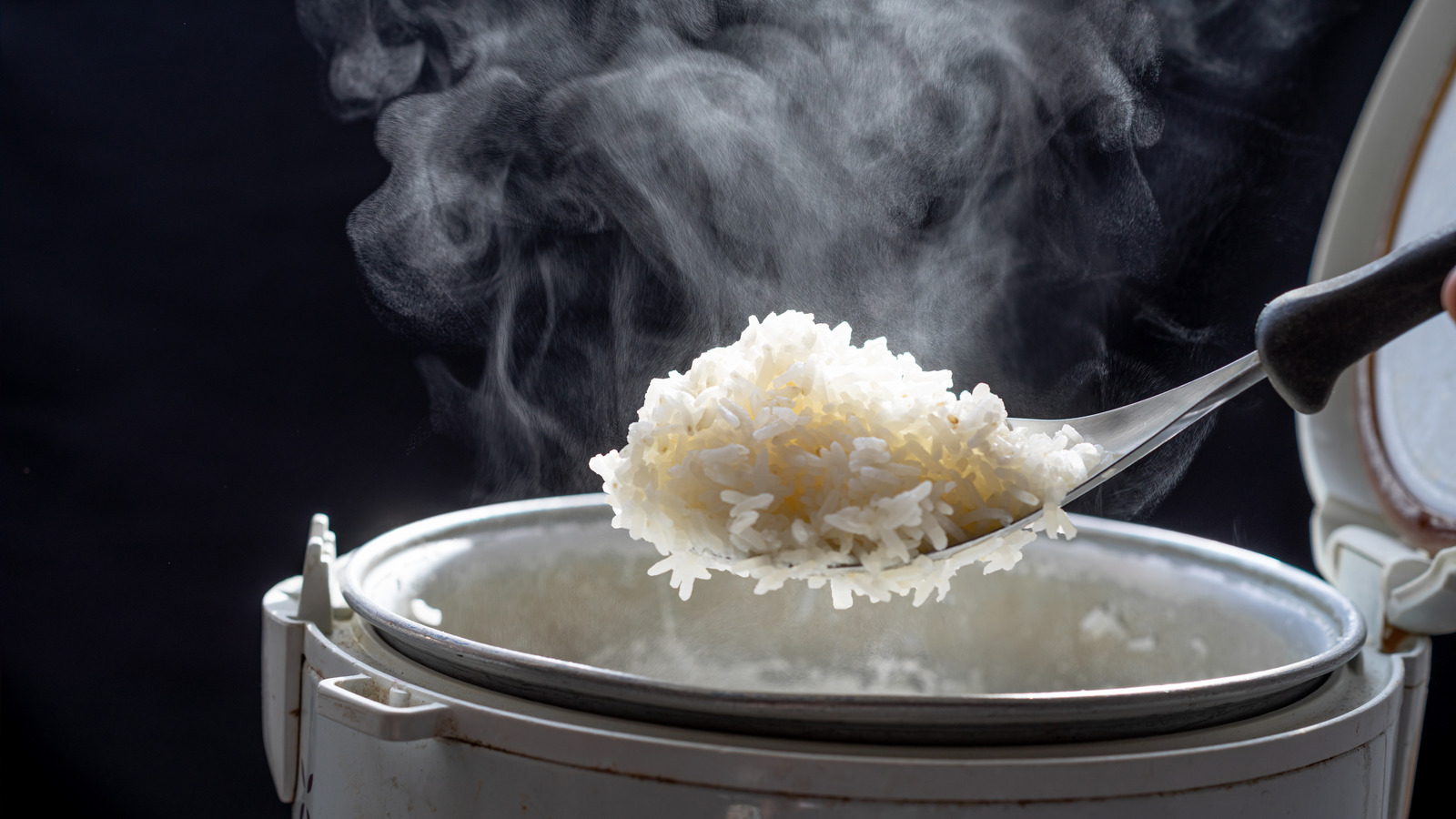How to Cook Biko in a Rice Cooker: A Delightful Filipino Treat
Written By James Morgan
Biko, also known as Filipino sweet sticky rice, is a beloved dessert made from glutinous rice and coconut milk. This traditional treat is often prepared for special occasions, celebrations, and gatherings. However, did you know that you can easily prepare this delightful dish using a rice cooker? That's right! In this comprehensive guide, we will delve into how to cook biko in a rice cooker and ensure you have all the tips and tricks to create a perfect, mouth-watering biko every time.

What is Biko?
Biko is a classic Filipino dessert that has been enjoyed for generations. Its main ingredients include glutinous rice, coconut milk, and brown sugar. The combination of these ingredients creates a rich, sweet, and slightly chewy treat that's hard to resist. Traditionally, biko is cooked on the stovetop, but thanks to modern kitchen appliances, you can now use a rice cooker to prepare this delicious dessert with minimal effort and maximum convenience.

Why Use a Rice Cooker for Biko?
Using a rice cooker to make biko offers several advantages. First, it simplifies the process, making it more accessible even for those who may not be comfortable with traditional cooking methods. Second, a rice cooker provides consistent heat, ensuring that your biko is cooked evenly without the risk of burning. Finally, it saves time and makes cleanup easier. Once you try making biko in a rice cooker, you'll wonder why you didn't do it sooner!

Ingredients
Before we get started, let's gather all the necessary ingredients for our rice cooker biko:
Ingredients
- 2 cups glutinous rice
- 2 cups water
- 2 cups coconut milk
- 1 1/2 cups brown sugar
- 1/2 tsp salt
- Banana leaves (optional, for lining the rice cooker)

Equipment
To make biko using a rice cooker, you'll need the following equipment:
- Rice Cooker: Any standard rice cooker will do the job perfectly.
- Cutting Board: Use a cutting board to prepare your banana leaves if you choose to use them.
- Knife Set: A sharp knife will help in preparing and cutting banana leaves.
Step-by-Step Instructions on How to Cook Biko in a Rice Cooker
Now, let's dive into the step-by-step process of making biko using your rice cooker. Follow these detailed instructions to ensure your biko turns out perfect every time.
Step 1: Preparing the Rice
Start by washing the glutinous rice thoroughly under cold water. Rinse the rice until the water runs clear. This step is crucial as it removes excess starch, which can make the biko too gummy.
Next, pour the washed rice into your rice cooker. Add 2 cups of water and soak the rice for at least 30 minutes. Soaking helps soften the rice and ensures it cooks evenly.
Step 2: Cooking the Rice
After soaking, turn on your rice cooker and select the cook function. Let the rice cook until the rice cooker automatically switches to the warm setting. This usually takes about 25-30 minutes, depending on your rice cooker model.
Step 3: Preparing the Coconut Mixture
While the rice is cooking, let's prepare the coconut mixture. In a separate saucepan, combine the coconut milk, brown sugar, and salt. Cook over medium heat, stirring constantly until the sugar is fully dissolved. Reduce the heat to low and let the mixture simmer for a few minutes until it thickens slightly.
Step 4: Combining the Ingredients
Once the rice is cooked, transfer it to a large bowl. Gradually add the coconut mixture to the rice, one ladle at a time, gently mixing until all the coconut mixture is incorporated into the rice. This process ensures that the rice absorbs the coconut milk evenly, resulting in a rich and flavorful biko.
Step 5: Final Cooking in the Rice Cooker
Clean your rice cooker pot thoroughly, then line it with banana leaves if you have them. The banana leaves not only add an authentic touch but also prevent the biko from sticking to the pot. If you don't have banana leaves, lightly grease the pot with oil to prevent sticking.
Transfer the coconut-coated rice back into the rice cooker pot. Spread it evenly so that it cooks uniformly. Turn on your rice cooker and cook the mixture for another 10-15 minutes until the biko is fully cooked and slightly firm.
Step 6: Serving and Enjoying
Once the biko is cooked, let it cool slightly before serving. To achieve clean and lovely cuts, use a sharp knife from your knife set and carefully slice the biko into your desired portion sizes.
Biko is best enjoyed warm or at room temperature. Its rich, sweet flavor combined with the slightly chewy texture makes it a delightful dessert that's perfect for any occasion. Whether you're enjoying it on its own or pairing it with a cup of coffee or tea, biko made in a rice cooker is sure to become a family favorite.
Tips and Tricks for the Perfect Biko
1. Use Quality Ingredients: The quality of your ingredients plays a significant role in the final taste of your biko. Opt for premium glutinous rice and fresh coconut milk for the best results.
2. Soaking the Rice: Don't skip the soaking step! Soaking the glutinous rice before cooking helps achieve the desired texture and ensures even cooking.
3. Controlling the Sweetness: Adjust the amount of brown sugar to suit your preference. If you prefer a less sweet biko, you can reduce the sugar slightly.
4. Banana Leaves: If you have access to banana leaves, use them to line your rice cooker pot. Besides preventing sticking, they add a unique aroma and flavor to the biko.
5. Consistent Stirring: When preparing the coconut mixture, stir it continuously to prevent burning and ensure the sugar dissolves evenly.
6. Patience is Key: Allow the biko to cool slightly before serving. This makes it easier to cut clean, presentable slices.
Frequently Asked Questions
Can I Use Regular Rice Instead of Glutinous Rice?
For traditional biko, glutinous rice is essential as it provides the characteristic sticky and chewy texture. Regular rice won't yield the same results and may not hold together properly.
Can I Make Biko Ahead of Time?
Yes, you can! Biko can be prepared ahead of time and stored in an airtight container at room temperature for up to two days. If you need to store it longer, refrigerate it for up to five days. To serve, simply warm it in the microwave or let it come to room temperature.
Can I Add Toppings to My Biko?
Absolutely! Biko is versatile, and you can customize it with your favorite toppings. Some popular options include latik (toasted coconut curds), grated coconut, or a drizzle of caramel sauce.
Can I Use a Slow Cooker Instead of a Rice Cooker?
While a rice cooker is recommended for this recipe, you can use a slow cooker if you don't have one. Follow the same steps and cook the rice on the low setting until it reaches the desired texture. Keep an eye on the cooking time as it may vary.
Is Biko Gluten-Free?
Yes, biko is naturally gluten-free as it uses glutinous rice, which is a type of sticky rice and does not contain gluten despite its name.
Adding Flavor Variations
Biko is delicious on its own, but you can experiment with different flavor variations to suit your taste preferences. Here are a few ideas to elevate your rice cooker biko:
- Pandan Biko: Add a few drops of pandan extract or place pandan leaves in the rice cooker during the cooking process for a fragrant and subtly sweet variation.
- Ube Biko: Mix in some ube halaya (purple yam jam) into the coconut mixture before combining it with the cooked rice. This adds a vibrant color and unique flavor.
- Chocolate Biko: Add cocoa powder to the coconut mixture for a chocolatey twist on the traditional biko.
- Mango Biko: Top your finished biko with slices of fresh mango for a refreshing and tropical touch.
Final Thoughts
Learning how to cook biko in a rice cooker opens up a world of convenience and deliciousness. This method not only saves time but also ensures consistent and perfect results every time. Biko's delightful blend of sticky rice and sweet coconut makes it a cherished dessert that's enjoyed by many. Whether you're making it for a special occasion, a potluck, or simply to satisfy your sweet cravings, biko is a treat that will always impress. Give it a try, and don't forget to experiment with different variations to make it your own!
As an Amazon Associate, I earn from qualifying purchases.
Additional Resources
For more tips on making the best Filipino desserts and exploring other mouth-watering recipes, check out these useful links:
- Cookware Cleaner: Keep your rice cooker and other cookware pristine with the best cleaners available.
- Cutting Board Oil: Maintain your cutting boards in perfect condition with quality cutting board oil.
- Green Bean Casserole: Learn how to make the perfect green bean casserole in a crock pot.
- Thick-Cut Bacon: Discover the secrets to cooking thick-cut bacon on a griddle.
- Chicken Casserole: Check out our guide to cooking chicken casserole in a slow cooker.
- AromaCo Recipes: Find more delicious recipes at AromaCo.



